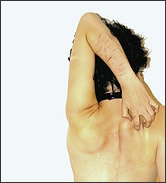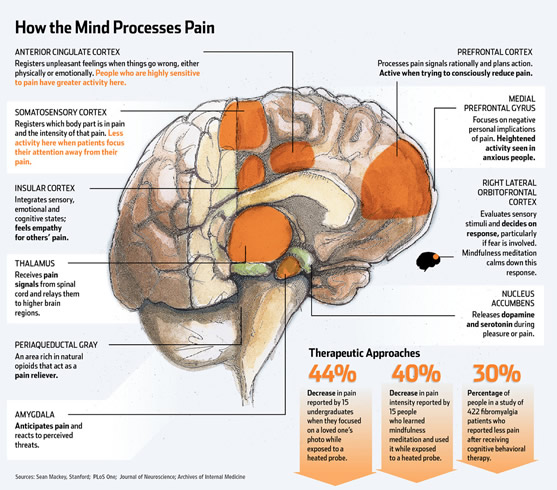Published: November 17, 2011
 Study finds 1 in 12 teenagers self-harm but most stop by their twenties
Study finds 1 in 12 teenagers self-harm but most stop by their twenties
Despite self-harm being one of the strongest predictors of completed suicide, 90% of young people who self-harm as adolescents cease self-harming once they reach young adulthood. However, those who start self-harming as young adults will have often experienced mental health problems as adolescents, such as anxiety or depression, which should be treated.
The study by Dr Paul Moran at the Institute of Psychiatry at King’s College London, and Professor George C Patton from Centre for Adolescent Health at the Murdoch Children’s Research Institute, Melbourne, Australia was published today in The Lancet and found that around 1 in 12 young people self-harm as adolescents, with the balance skewed towards girls.
“Self-harm is one of the most significant predictors of completed suicide, ” a lead author, Dr Paul Moran, of King’s College London, said.
Of the people who have died by suicide, around 50-60% have a known history of self-harm, according to Professor Keith Hawton, Director of the Centre for Suicide Research, University of Oxford.
The study found that during adolescence, self-harm was associated with symptoms of depression and anxiety, antisocial behaviour, high-risk alcohol use, cannabis use and cigarette smoking. Additionally, those who experienced depression or anxiety during adolescence were around six times more likely to self-harm in young adulthood than adolescents without depression/anxiety.
These findings are discussed further in this Lancet podcast
Source: The Lancet Kings College London
Published: November 16, 2011
A new study by University of Massachusetts Amherst researchers finds that communication using computers for instant messaging and e-mail increases lying compared to face-to-face conversations, and that e-mail messages are most likely to contain lies. The findings, by Robert S. Feldman, professor of psychology and dean of the College of Social and Behavioral Sciences, and Mattityahu Zimbler, a graduate student, are published in the October issue of the Journal of Applied Social Psychology.
The research paper, titled “Liar, Liar, Hard Drive on Fire: How Media Context Affects Lying Behavior,” looked at 110 same-sex pairs of college students who engaged in 15 minute conversations either face-to-face, using e-mail, or using instant messaging. The results were then analyzed for inaccuracies.
What Feldman and Zimbler found was that while there is some degree of deception present in all three forms of communication, it was increased in both instant messaging and e-mail, with e-mail messages the most likely to contain lies. Underlying this was the concept of deindividualization, where as people grow psychologically and physically further from the person they are in communication with, there is a higher likelihood of lying, they say. [continue reading…]
Published: November 16, 2011
 Girls with high childhood IQs are more likely to take illegal drugs in their 30s, research has uncovered.
Girls with high childhood IQs are more likely to take illegal drugs in their 30s, research has uncovered.
Dr James White from the Centre for the Development and Evaluation of Complex Interventions for Public Health Improvement (DECIPHer) examined data from just under 8000 people in the 1970 British Cohort Study, a large ongoing population based study, which looks at lifetime drug use, socioeconomic factors, and educational attainment.
The IQ scores of the participants were measured at the ages of 5 and 10 years, using validated scales, and information was gathered on self reported levels of psychological distress and drug use at the age of 16, and again at the age of 30.
Drugs assessed at 16 included cannabis and cocaine; and at 30 years of age included cannabis; cocaine; amphetamines; and ecstasy.
By the age of 30, around one in three men (35.4%) and one in six women (15.9%) had used cannabis, while 8.6% of men and 3.6% of women had used cocaine, in the previous 12 months. A similar pattern of use was found for the other drugs, with overall drug use twice as common among men as among women. [continue reading…]
Published: November 16, 2011

Source: Sean Mackey, Stanford. Plos One, Journal Neuroscience: Archives of Internal Medicine
Melinda Beck’s Wall Street Journal article Rewiring the Brain to Ease Pain looks at how you think about pain can have a major impact on how it feels.
That’s the intriguing conclusion neuroscientists are reaching as scanning technologies let them see how the brain processes pain.
That’s also the principle behind many mind-body approaches to chronic pain that are proving surprisingly effective in clinical trials.
Some are as old as meditation, hypnosis and tai chi, while others are far more high tech. In studies at Stanford University’s Neuroscience and Pain Lab, subjects can watch their own brains react to pain in real-time and learn to control their response—much like building up a muscle. When subjects focused on something distracting instead of the pain, they had more activity in the higher-thinking parts of their brains. When they “re-evaluated” their pain emotionally—”Yes, my back hurts, but I won’t let that stop me”—they had more activity in the deep brain structures that process emotion. Either way, they were able to ease their own pain significantly, according to a study in the journal Anesthesiology last month.
Link to read article
Source: Wall Street Journal
 Study finds 1 in 12 teenagers self-harm but most stop by their twenties
Study finds 1 in 12 teenagers self-harm but most stop by their twenties Girls with high childhood IQs are more likely to take illegal drugs in their 30s, research has uncovered.
Girls with high childhood IQs are more likely to take illegal drugs in their 30s, research has uncovered.
